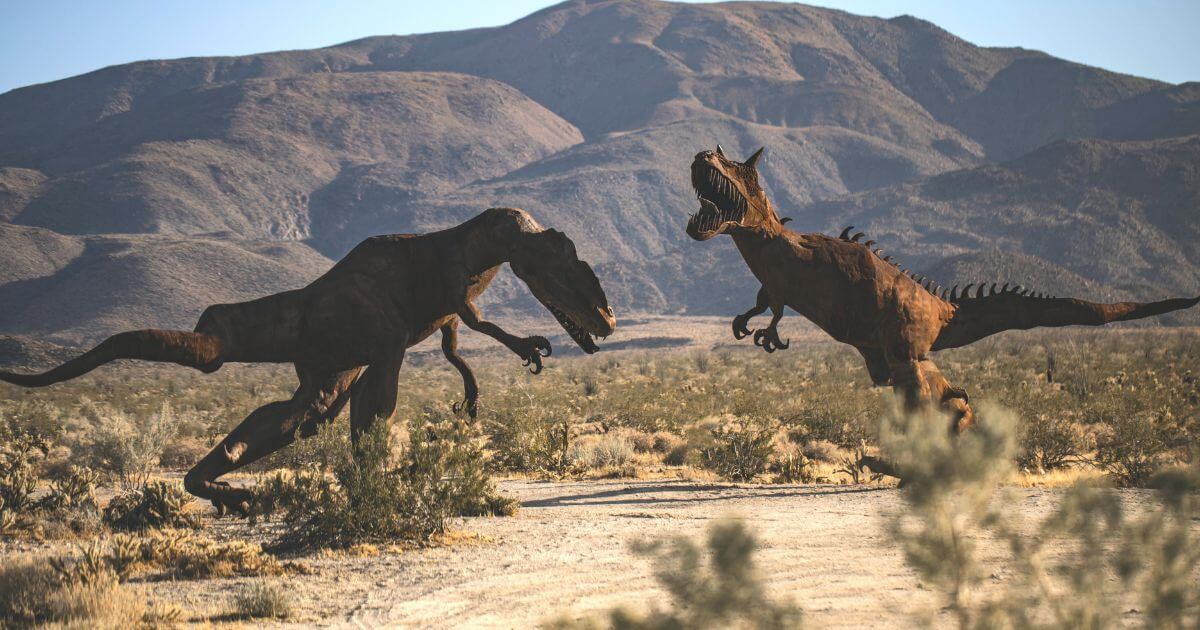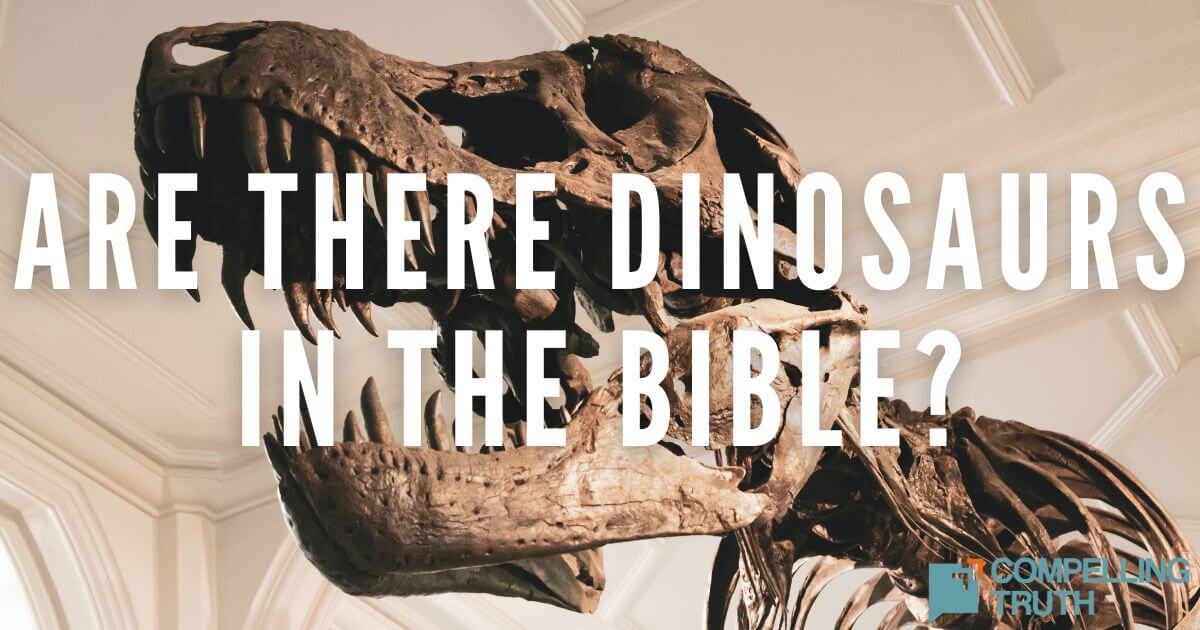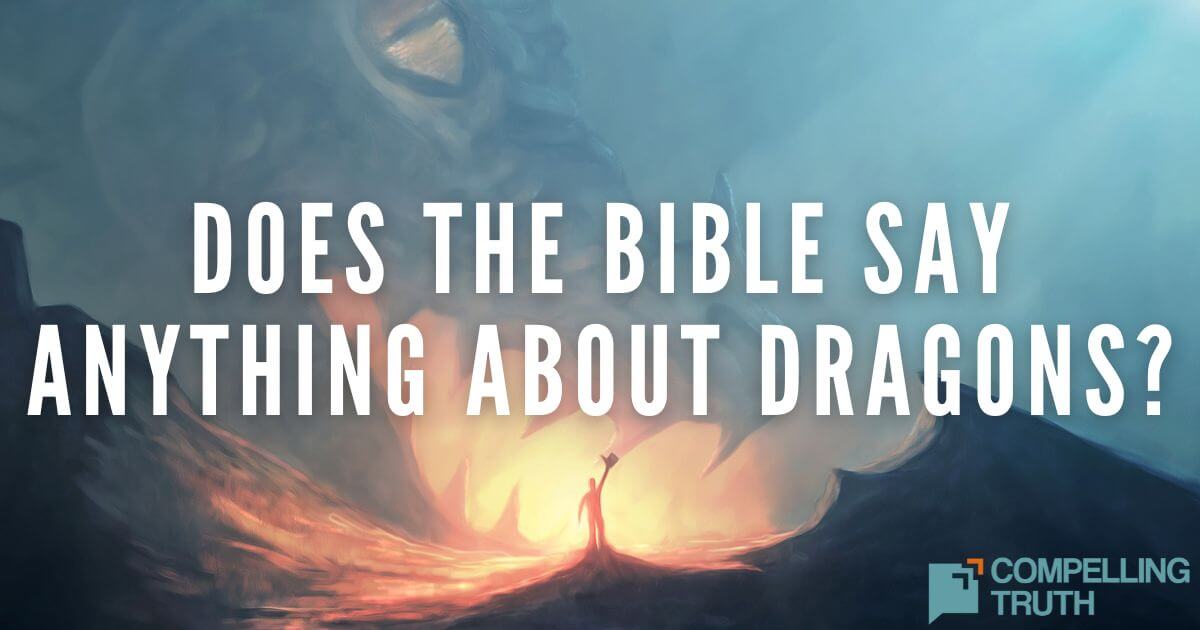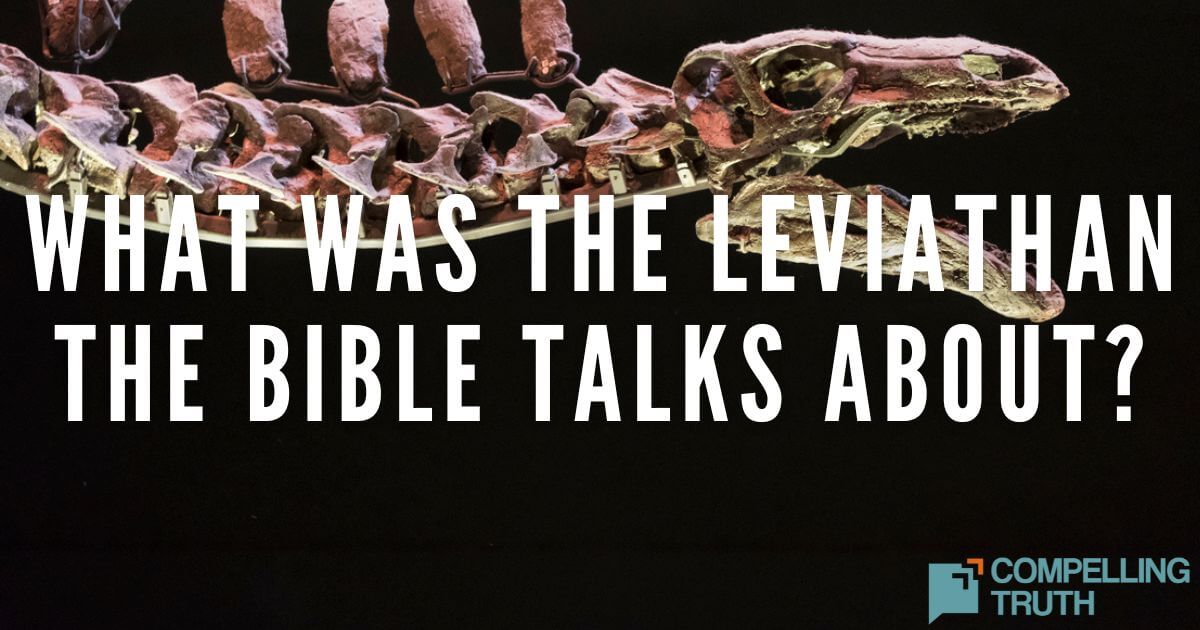Many scientists support an evolutionary geological timescale dating dinosaur extinction to 65 million years ago. However, some suggest that the Bible and cultural evidence point to the coexistence of dinosaurs and humans. This would mean a much more recent extinction. Most Young-Earth creationists think that the flood of Noah's day (Genesis 6—9) led to the extinction of the dinosaurs. Dinosaur fossils are often found in marine levels of sediment. The positioning of the fossils in bone beds and fluid-like sediment patterns suggests they died quickly due to water. Although the actual cause of the dinosaurs' extinction is still up for debate, the Bible may support the existence of dinosaur-like creatures that lived at the same time as humans. In the book of Job two creatures are described. The first is the behemoth, a strong land-dwelling creature (Job 40:16–18). The second is leviathan, a dragon-like beast of the sea (Job 41:19–21). It has been suggested that these are depictions of dinosaurs.
We find the fossilized remains of giant reptiles all over the earth, yet we do not see any of these creatures alive today. What happened to them all? The conventional paradigm says that the dinosaurs mysteriously went extinct around 65 million years ago. An assortment of explanations has been offered as to why. The two most popular hypotheses to explain dinosaur extinction are the Impact Event Hypothesis and the Massive Volcanism Hypothesis. The first proposes that one or more asteroids struck the earth, causing a “nuclear winter” that wiped out the dinosaurs. The second blames intense volcanism—sustained, widespread volcanic eruptions—for their demise.
Both hypotheses of dinosaur extinction are supported by some evidence while being challenged by others. For example, if either hypothesis is correct and there is a 60+ million-year gap between man and dinosaur, how then do we explain petroglyphs and other forms of ancient art that appear to depict humans interacting with such familiar dinosaurs as the triceratops, stegosaurus, tyrannosaurus, and the sauropods? If dinosaurs went extinct long before mankind appeared, why do ancient cultures from every inhabited continent record interactions with giant reptiles?
Along the same lines, flexible animal tissues still persist inside some fossilized dinosaur bones. There is skepticism about how blood vessels, hemoglobin proteins, and whole bone cells could last one million years, let alone 67 million. For reasons such as these, Young-Earth creationists believe Noah’s recent flood is the better explanation of the extinction of dinosaurs.




